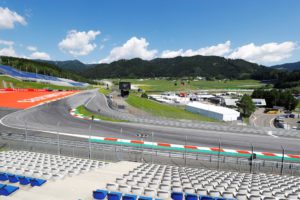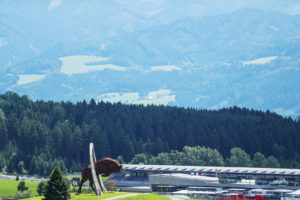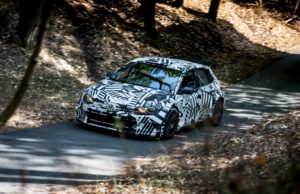The Austrian Grand prix is the ninth round of the 2018 Formula 1 world championship.
Red Bull Ring, Spielberg
29 June-1 July 2018
Start time 15:10 hrs local/14:10 hrs BST
Race laps 71
Tyre choice Yellow Soft, Red Supersoft, Purple Ultrasoft
Complete race distance 306.452 kilometres (190.421 miles)
Pit lane speed limit: 80 kph (50 mph)
This 4.318-kilometer (2.683-mile), 10-turn circuit has hosted Formula One 11 times. The first seven races were held on a condensed version of the Österreichring, known as the A-1 Ring, between 1997-2003 before returning to the renamed Red Bull Ring in 2014.
Lewis Hamilton holds the race lap record at the Red Bull Ring (1:07.411), set last year with Mercedes.
Valtteri Bottas holds the lap qualifying record at the Red Bull Ring (1:04.251), set last year with Mercedes.

The Red Bull Ring is relatively short – only Monaco, Mexico City and Interlagos (Brazil) are shorter – and compact with just 10 turns
The circuit covers a wide range of conditions. The prime overtaking zone comes at turn three (Remus), where after heavy braking, drivers navigate the sharp corner in either first or second gear. Juxtapose that section with the high-speed turn nine (Rindt), which drivers take at sixth gear, pushing the limits of their car and their resolve.
DYK? Hermann Tilke, the man who has designed many of the newer circuits in Formula One, was responsible for the redesign of the 5.942 kilometres (3.692-mile) Österreichring into the 4.326-kilometer (2.688-mile) A-1 Ring, known now as the Red Bull Ring. The new track debuted in 1996 and Formula One returned in 1997. It was Tilke’s first major track redesign.
During the course of the Austrian Grand Prix, lows will range from 9-15 degrees Celsius (49-59 degrees Fahrenheit) to highs of 24-25 degrees Celsius (75-78 degrees Fahrenheit). Relative humidity ranges from 47 percent (comfortable) to 92 percent (very humid), with a dewpoint varying from 9 degrees Celsius/49 degrees Fahrenheit (dry) to 16 degrees Celsius/60 degrees Fahrenheit (comfortable). The dew point is rarely below 6 degrees Celsius/42 degrees Fahrenheit (dry) or above 18 degrees Celsius/65 degrees Fahrenheit (mildly humid). Typical wind speeds vary from 2-18 kph/1-11 mph (light air to light breeze), rarely exceeding 29 kph/18 mph (moderate breeze).

Toughest corner Turn Nine, (Rindt Curve)
This is the fastest corner on the lap, taken in sixth gear at 240km/h (150mph). The cars approach it over a crest and the track drops downhill at the apex, so it’s easy to understeer wide at the exit.
Most demanding section Turns Six and Seven are the corners most enjoyed by the drivers. They are fast –- fifth gear, minimum apex speed 185km/h (115mph) – and the track drops sharply downhill through Turn Six, giving the drivers a spectacular roller-coaster ride.
2018 Formula 1, ninth round – the Austrian Grand prix
Biggest challenge Lap length. There are only 10 corners and at roughly 65s, this is the shortest lap of the year in terms of time. That means mistakes are punished hard in qualifying because the smallest error can mean a loss of several grid positions.
Braking Medium. There are three significant braking areas on the lap, all of them occurring in the first half of the circuit. The average deceleration per corner is 4.2g and the drivers can expect to use the brakes for a total of 11 minutes during the grand prix.

Power The cars use 1.7kg of fuel per lap, which is average.
Aero Medium downforce. Top speeds are crucial, but so is slow-speed traction, which is why the teams opt for medium downforce levels. Also, the track is situated at 700m, making this the first high-altitude challenge of the season, which has ramifications for aerodynamics and the power unit.

































